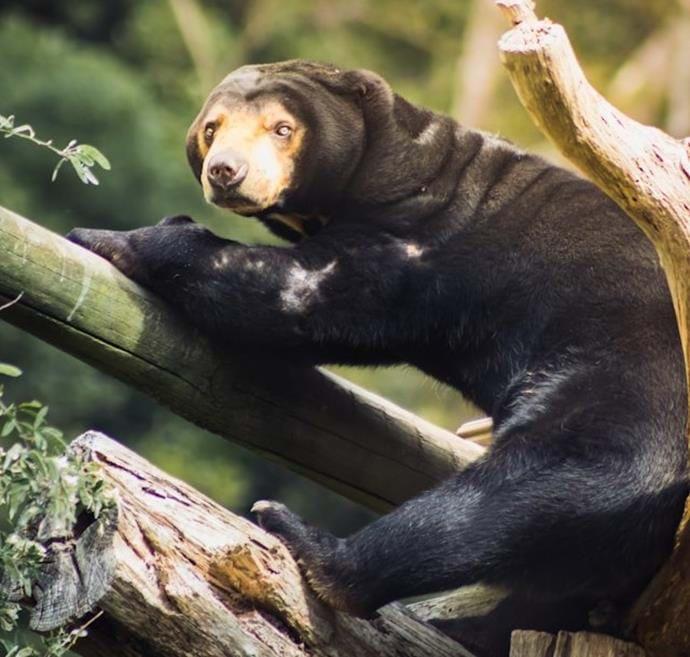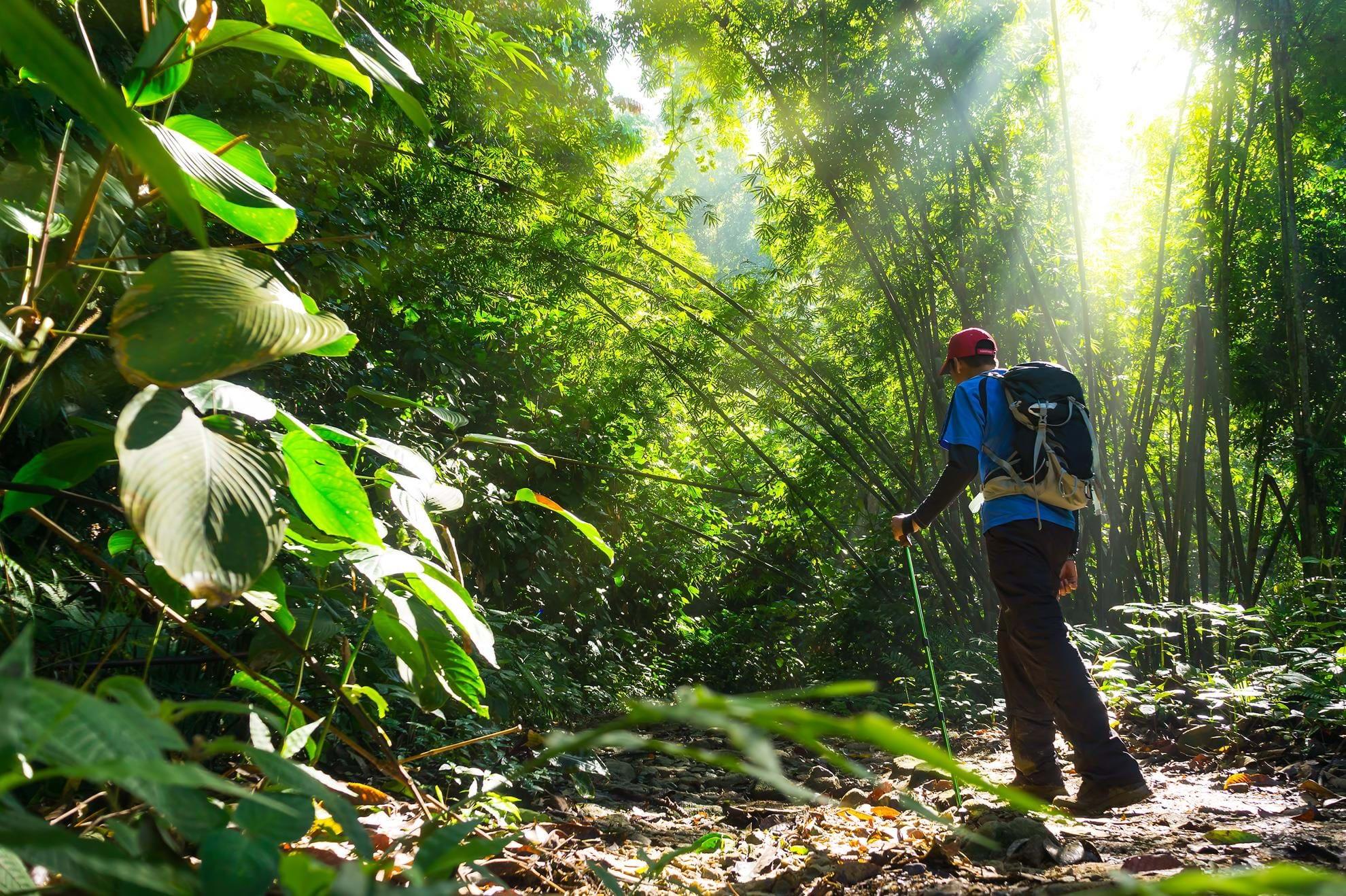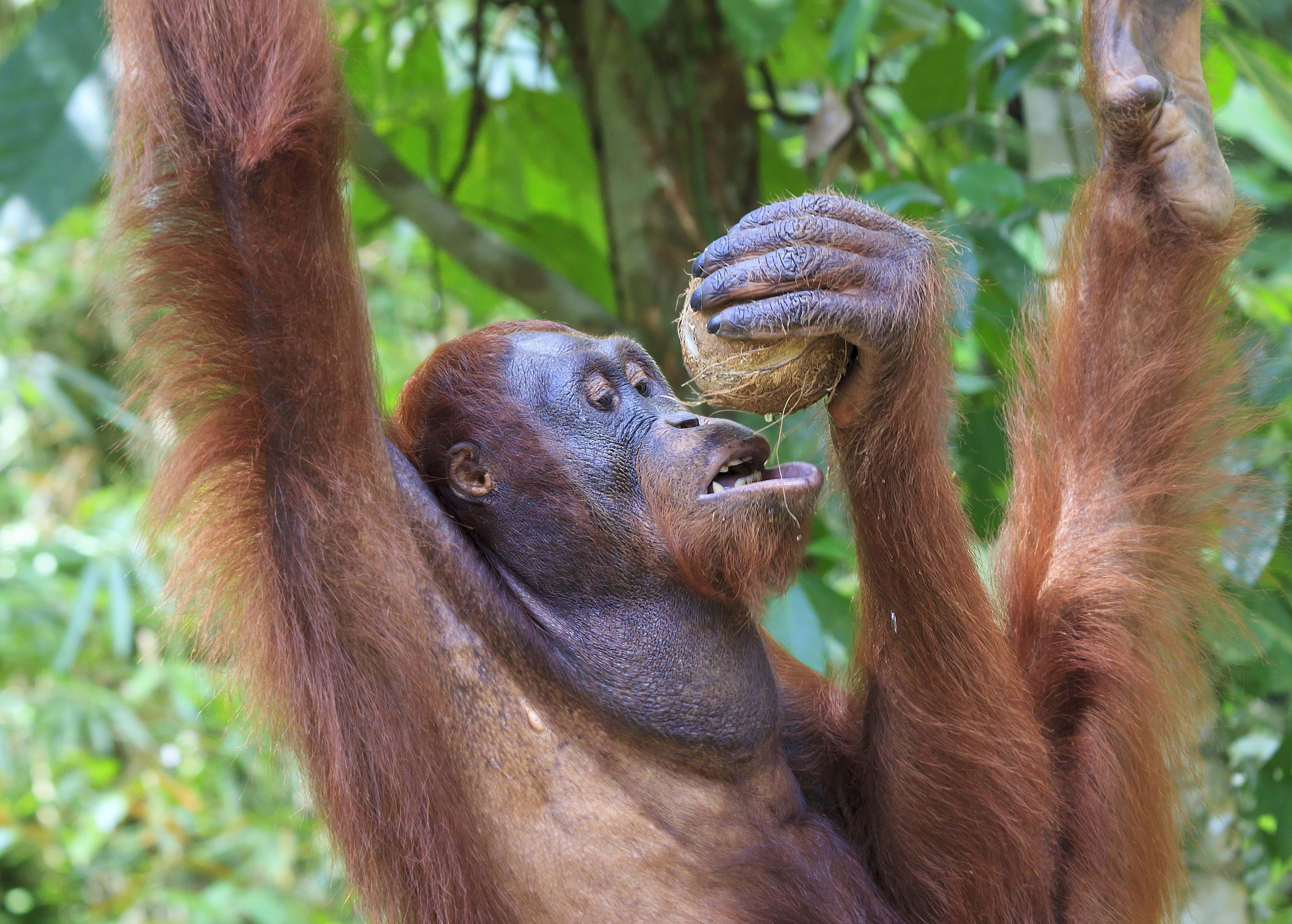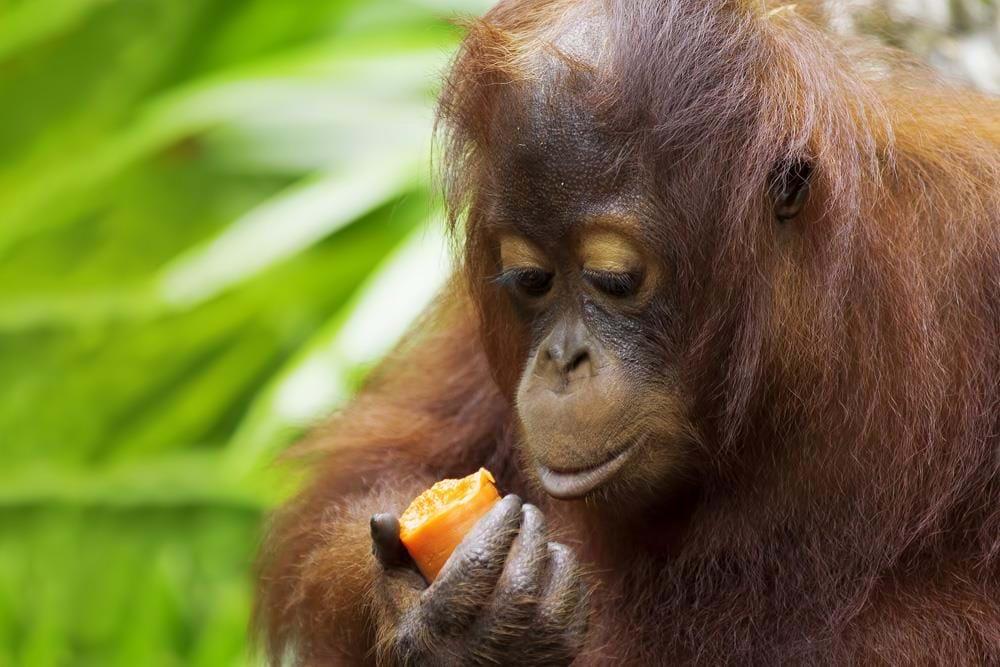Malaysia 31.03.2024 Updated: Transindus
When dreaming about Borneo you conjure up images of vast, pristine rainforests full of undiscovered flora and fauna, lofty mountain peaks, unrivalled diving spots in emerald seas and exotic indigenous tribes with blowpipes at the ready. And that's before you get to the wildlife. Whether it’s the long-armed, canopy-dwelling Orangutan, the long-nosed Proboscis monkey, both endemic to Borneo, or the Pygmy elephant, the smallest of its kind, the island of Borneo is a wildlife haven. Travel into the depths of Danum Valley and you might even glimpse a wild Sun bear or Sumatran rhino.
Orangutan
Orangutans, which are 96.4% human, are Borneo’s most famous inhabitant. Whilst they may not look or act like the stealthiest of animals they are extremely hard to see in the wild. Travelling alone, high up in the dense jungle foliage makes it hard enough, but even when you’re up close, and despite their unique, standout, orange-reddish brown colour they discreetly blend into shadows of the jungle-clad surroundings.
I would have walked straight past a baby and its mother, near Gomantong caves in Sabah, had it not been for my eagle-eyed guide. But seeing the trees sway at Semonggoh Orangutan Rehabilitation Sanctuary, as they crashed from tree to tree, leaping down in a volley of thunder from their towering homes to the feeding platforms was an experience I’ll never forget.
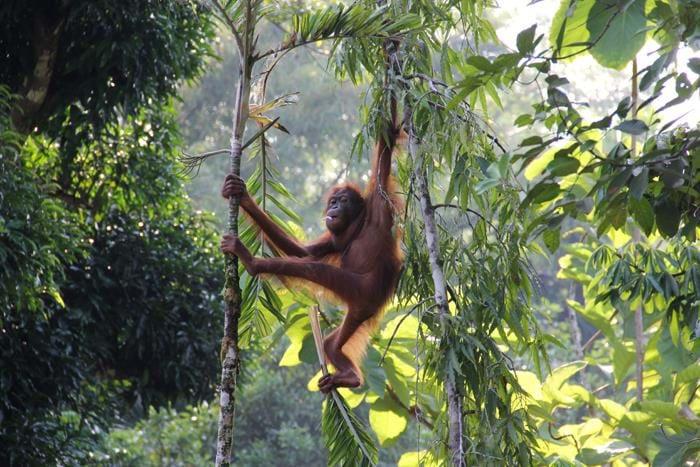
Semonggoh in Sarawak and Sepilok in Sabah are two of the world's four Orangutan Rehabilitation Sanctuaries’. Orphaned Orangutans are rehabilitated in semi-wild conditions before leaving of their own accord out into the wild. Two feedings a day at both sanctuaries allow you close up access to this endangered species.
Of course, you may not be as lucky as I was to catch nine of them swinging down in quick succession, but the anticipation and tingle of excitement as you scour the vicinity is worth it in its self. For the sanctuaries though, the fewer that show up for feeding the better; it’s more likely the Orangutans will be less dependent on the daily offering of fruit and are off fending for themselves.
Proboscis monkey
Arguably Borneo’s second famous type of inhabitant is the most aquatic of primates, renowned for its throbbing nose and pot shaped belly. Should you see one sense danger, the Proboscis monkeys noses will stand out even straighter and longer as they honk loudly to warn others of an impending risk.
Living within distance of water, two of the best places to spot the reddish brown coated monkeys are the peninsula mangroves of Bako National Park and the tributaries of the Kinabatangan River basin near Sukau. Whilst they do swim, you can tell they only do so when absolutely necessary, such is the lack of elegance in their doggy paddle and belly flop dives!
Taking a boat out just before sunset offers you the best bet of seeing the long-nosed creatures in large numbers. With their perfectly straight backs holding their pot belly upright they tend to line the branches of water residing trees to protect themselves from predators whilst sleeping off their belly full of leaves.
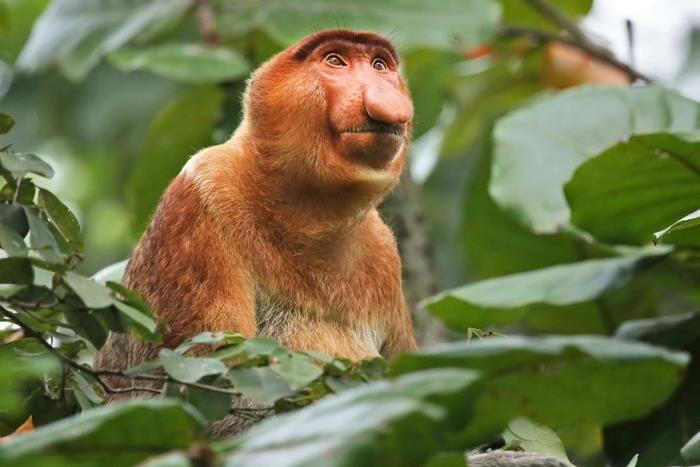
Pygmy Elephants of Borneo
As well as being a good spot for wild Orangutans and Proboscis monkeys the Kinabatangan River basin has the highest number of Bornean Pygmy elephants on the island. But with rumours flying around the area’s riverside resorts that in his five journeys to the area so far, even Sir David Attenborough hasn’t seen them, these Disney-like elephants are far from a guaranteed sight.
Nevertheless, as we rounded a bend on the muddy waters of the Kinabatangan River on our way to Sandakan, from the reeds adorning the river bank, out popped the trunk of an adult pygmy. Seconds later, out of the dense jungle, a trumpet, followed by an immediate crash announced the emergence of three more 3-metre high pygmy’s, and at the back, just visible above the riverside shrubbery as the herd came side onto the river, a baby pygmy, less than 2.5ms tall. Beat that Sir David!
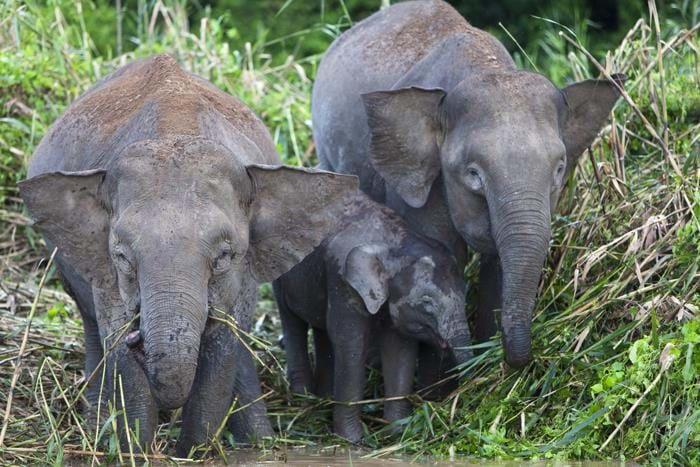
But even if you don’t see one of the more famous inhabitants of the Kinabatangan then the shrill cry of hornbills, the cacophony calling of macaques, the sight of vibrantly coloured kingfishers zipping through the air, the snakes that inconspicuously wrap themselves around branches or the crocodiles that furtively bubble along should just about keep you occupied.
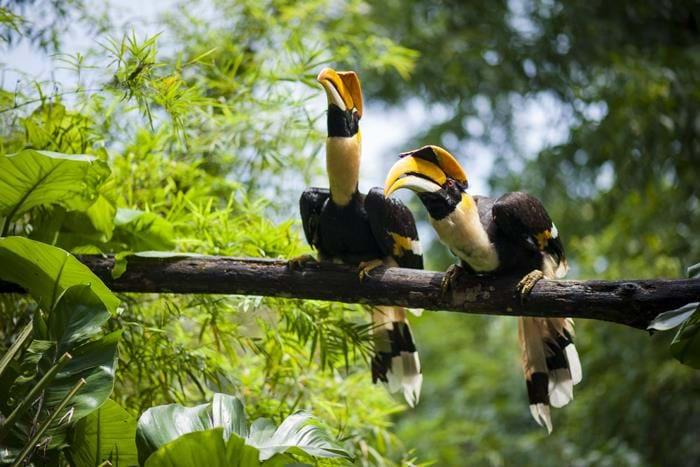
Green and Hawksbill Turtles
To finish off a wildlife trip in Malaysian Borneo what more could you want than to relax on chalk, white sandy beaches in the midst of emerald seas whilst experiencing the saving and re-population of an endangered species? Selingan Island in the Turtle Islands National Park, 40km off Sandakan, offers you just that. Sunbathe, swim or snorkel on its pristine beaches during the day before gearing up for the real reason you’re there after sunset.
Listen out for the rangers call and watch a female Green or Hawksbill turtle lay its eggs in the midst of the night as the guide quietly talks you through the process of keeping this species alive. Follow the eggs to the hatchery before watching the tiny hatchlings venture down the beach into the unknown of the Sulu Sea.
For the more hardy and interested, head to Talang-Satang National Park, off Kuching, Sarawak. A more intimate, hands-on experience awaits. With a maximum of just 6 tourists on the island at any one time, for 4 days you will be trained in and take part in turtle conservation techniques and gain a certificate of participation upon completion.
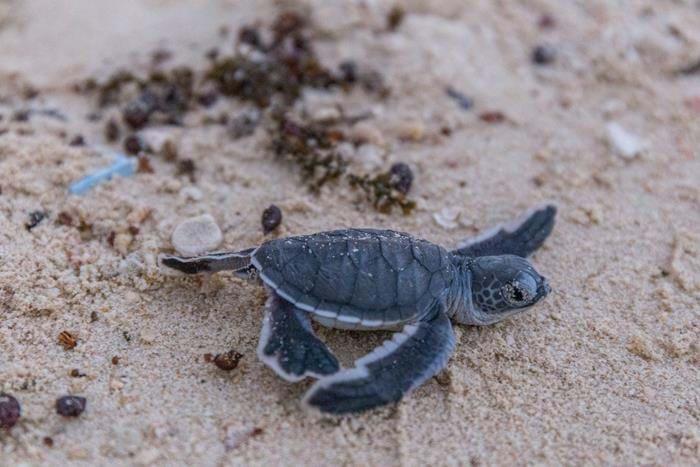
Sun Bears
If all this doesn't whet your appetite, the only Sun Bear Conservation centre in the world opened its doors to the public in early 2014 in Sabah. All the more reason for a wildlife trip of a lifetime! The smallest of the bear family, these adorable creatures are also known as 'honey bears' for their love of honeycombs. Numbers have declined due to the loss of habitat so the conservation centre is the best place to come face-to-face with these bears.
